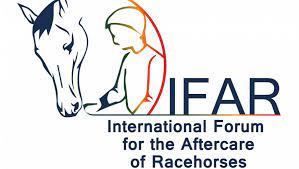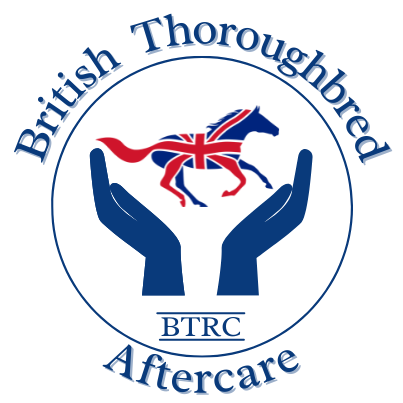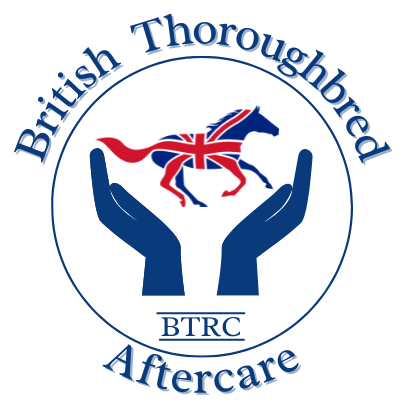BTRC has been providing Thoroughbred Aftercare for 30 years, but what is Aftercare and why is it so important?
Since the 1950’s the breeding and racing of Thoroughbreds throughout the world has become significantly more commercial with the introduction of organised betting and racing in many countries. Today horseracing is a multi–billion international industry with a complex global supply chain. To meet the increasing demand for racehorses the breeding industry has expanded and more horses than ever are being bred to race. It is therefore fair to assume that more horses than ever are both retiring from racing after their careers are over or never entering training in the first place.
In recent years, whilst the commercial and economic impact of horseracing has grown, so has the intensity of discussion regarding the ethical use of animals for entertainment and sport. The ‘Red Line’ of what society believes to be ethical is constantly changing and in order for horseracing to survive it must stay within the accepted boundaries to ensure it continues to receive support from the public and therefore retains a social licence to operate. Many believe that the quality of life at retirement is a major contributing factor to the public perception of racehorse welfare.

The International Forum for the Aftercare of Racehorses (IFAR) was established in 2016 to advocate for the lifetime care of Thoroughbred racehorses, to increase awareness within the international racing community and educate the sport horse world and the general public on the welfare of Thoroughbred racehorses. Six strategies that support positive aftercare outcomes have been identified:
- Lifecycle Management: Traceability to first exit from Racing. “Lifetime management” relates to the implementation of rules that provide regulatory oversight, drive awareness and accountability at a participant level and facilitate the collection of relevant data.
- Transitioning Strategies: This looks to stimulate demand and supply for off the track Thoroughbreds in the equestrian market.
- Safety Net: Requires that jurisdictions implement initiatives that help and support horses at risk of neglect.
- Community Engagement Strategies: Racing authorities are recommended to support the use of off the track Thoroughbreds to build community engagement.
- Advocacy: Identified as an important activity to ensure that the Thoroughbred breed remains popular in the equestrian market.
- Networking: The world is interconnected at an unprecedented level and a negative story in one country has repercussions throughout the global racing industry
Reference: Forbes, E. (2019). The Aftercare Toolkit – Practical Strategies for Racing Authorities.
How does BTRC assist with improving Aftercare?

“Thousands of Thoroughbreds retire from horseracing each year and the majority find suitable homes in either equestrian, breeding or pasture retirement. For this reason, it is important to understand that not all Thoroughbreds need life-time responsibility from the industry. But BTRC provides a safety-net for those unfortunate horses that may need assistance by offering a safe haven and safeguarded future”. BTRC CEO, Gillian Carlisle.
A relatively small number of horses can find the transition between racing and equestrian difficult. They may struggle due to a variety of reasons such as; a change in environment, daily routine, diet or exercise, physical conditions or the new owner may lack the knowledge, finances or riding ability required to assist the horse through this transitional phase. Fundamentally, like humans, some horses are just more versatile and can adapt and accept change easier than others.
A second group of Thoroughbreds that may require assistance are horses that have successfully transitioned from racing into equestrian, however after a period of time they may start to find their work difficult. This can be due to pre-existing conditions that may have become more problematic as the horse becomes older or too much has been asked of the horse and they can no longer remain comfortable at this heightened level of ridden exercise.



Thoroughbreds are generally very versatile, tolerant and workmanlike and like to please. However, in both circumstances mentioned the horse can find their work difficult and painful. In our experience the majority of Thoroughbreds presenting with behavioural and rideability issues is generally as result of pain and discomfort. On some occasions the owners may be aware of clinical issues but can not afford vet treatment or have used the full quota of insurance to cover the vet bills but remain without a definitive answer as to whether the horse will be suitable for equestrian.


Thoroughbreds that are struggling at the transition point or later in their equestrian careers can quickly become potentially vulnerable and that is why it is so important that Aftercare is available to assist and if necessary, offer a safety net for those horses in the most need and that have limited options available to them.
How does BTRC help?
The BTRC aims to provide Aftercare services and support in four ways:
- 24/7 Thoroughbred Helpline
- Vulnerable Horse Programme – including Rehabilitation and Retraining.
- Education
- Community Engagement
For more information on Aftercare such as who is responsible and how Aftercare in the UK is funded please go to our BTA FAQ’s.

You must be logged in to post a comment.